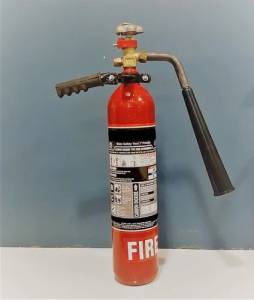
CO2 fire extinguishers, also known as carbon dioxide extinguishers, are a versatile and effective solution for combating specific types of fires. Unlike water or foam extinguishers, CO2 extinguishers utilize carbon dioxide gas to extinguish flames, making them ideal for situations where water damage is undesirable or where electrical equipment is involved.
Here's a detailed breakdown of CO2 fire extinguisher capabilities and benefits:
How They Work:
CO2 extinguishers suppress fires by displacing oxygen, the essential element for combustion. The released carbon dioxide gas forms a blanket over the flames, cutting off their oxygen supply and extinguishing them. This process is clean, leaving no residue or water damage.
Ideal for Extinguishing:
Advantages of CO2 Extinguishers:
Disadvantages of CO2 Extinguishers:
Choosing the Right CO2 Extinguisher:
CO2 extinguishers are available in various sizes and capacities, depending on the intended application. Consider the potential fire hazards in your environment when selecting the appropriate size and rating. Always consult local fire codes and regulations for specific requirements.
Maintenance and Inspection:
Regular inspection and maintenance are crucial to ensure the extinguisher's effectiveness. Ensure that the extinguisher is visually inspected periodically and serviced by a qualified technician according to the manufacturer's recommendations.
In conclusion: CO2 fire extinguishers provide a valuable layer of fire protection for specific fire types, offering a clean and effective solution where water damage is a concern or electrical hazards exist. However, understanding their limitations and using them correctly is essential for safety. Always prioritize proper fire safety training and have a comprehensive fire safety plan in place.